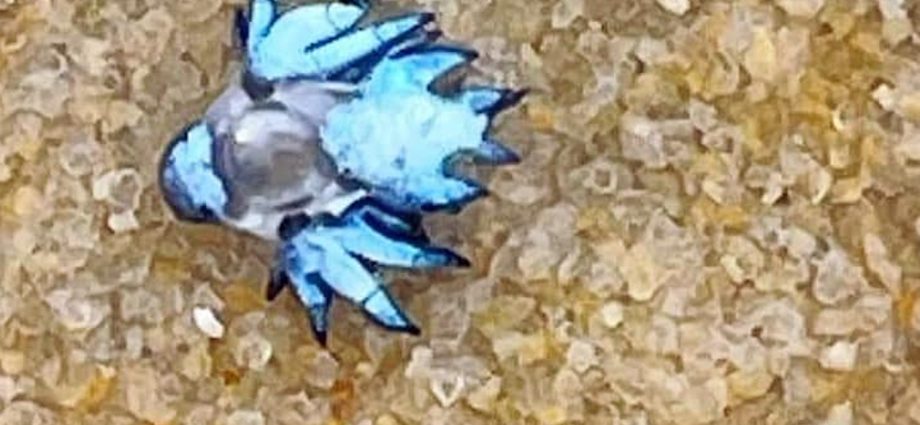Tiny creatures deliver a sting similar to that of a jellyfish
PUBLISHED : 31 Aug 2023 at 16:36

A blue dragon, a small but highly venomous type of sea slug, has been found on Karon beach in Phuket, according to pictures posted on the Monsoongarbage Thailand Facebook page.
The creatures are usually found in the middle of the sea and rarely seen in coastal areas, said Thon Thamrongnawasawat, a lecturer with the Faculty of Fisheries at Kasetsart University, in response to questions from administrators of the Facebook page.
In the case of Phuket, it might have been swept ashore by sea waves, Mr Thon explained in a post on his Facebook page.
The blue dragon (Glaucus atlanticus) is a type of mollusk or sea slug known as a nudibranch. It feeds on other sea creatures, including the Portuguese man o’ war and other venomous siphonophores. It stores stinging nematocysts from the siphonophores within its own tissues as defence against predators.
The small, ornate creature rarely grows larger than 4 centimetres, but one sting can lead to nausea, pain, vomiting, acute contact dermatitis, and post-inflammatory hyperpigmentation.
Mr Thon said the blue dragon can be found on the surface of the Atlantic, Pacific and Indian oceans in temperate and tropical waters throughout the world.
Those stung by a blue dragon will feel as if their skin has been pierced by a needle coated with poison. They are advised to apply vinegar to the wound, the same remedy used to treat jellyfish stings.

